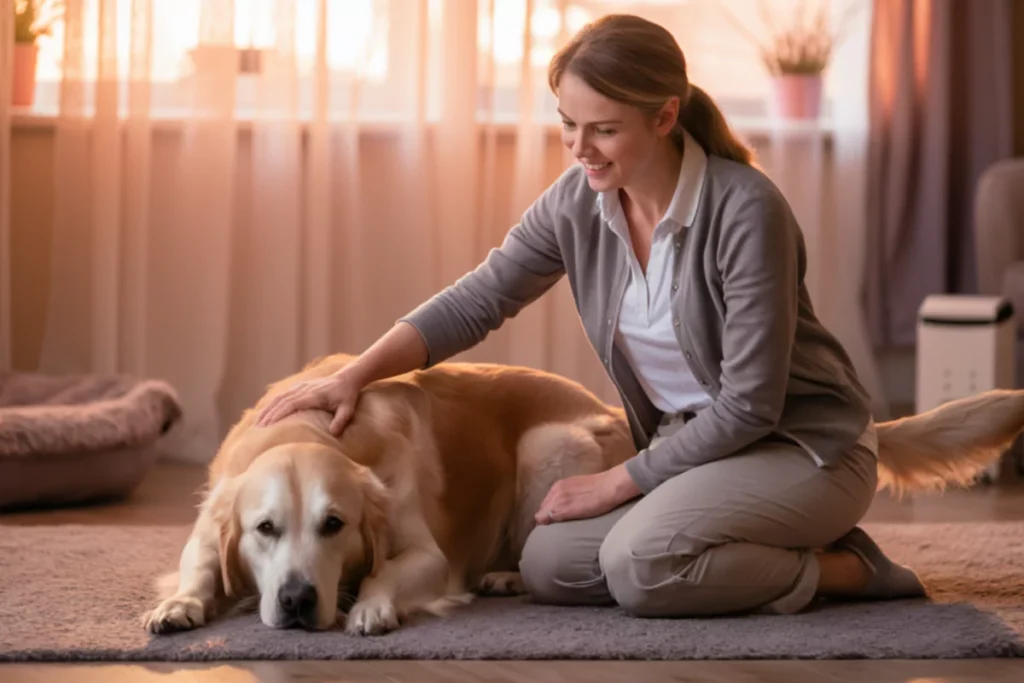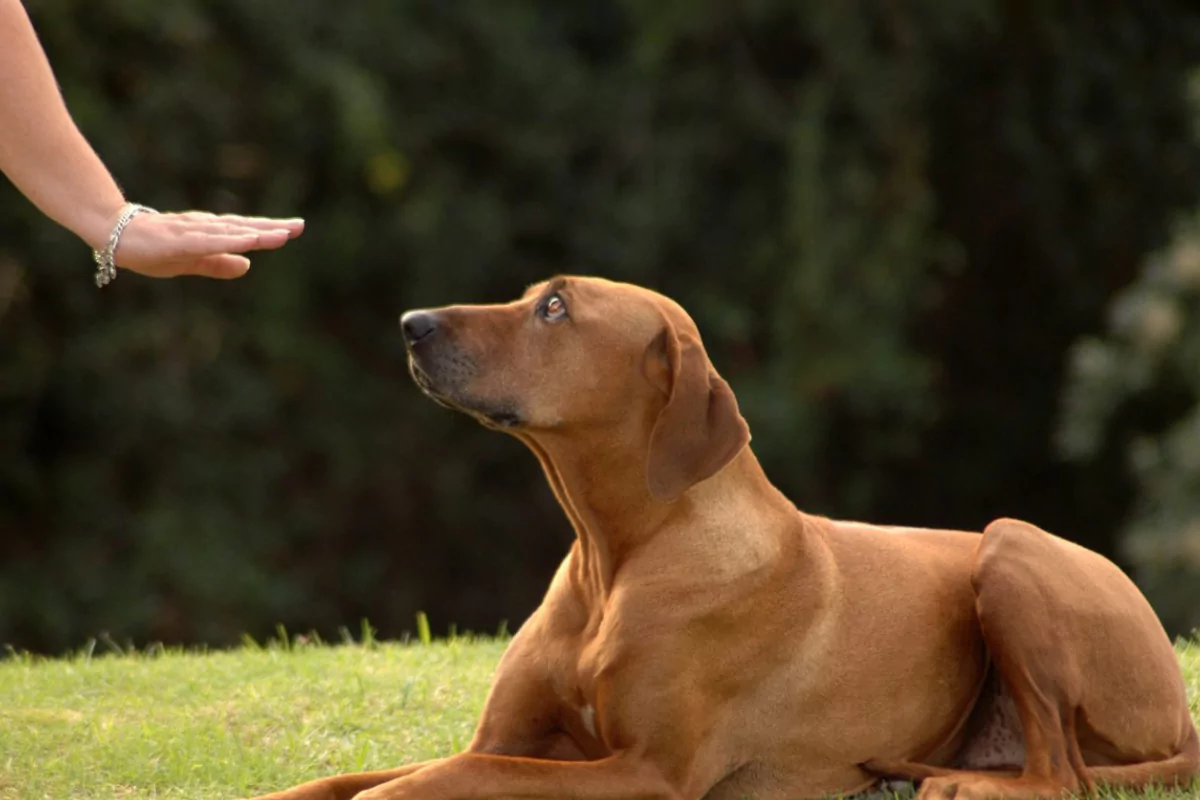Hello people! Have you ever listened to deaf dog stories? Stories of a dog’s loyalty, love, and even sheer bravery to dogs fill the bond humans share with them. However, this long-standing dysfunctional relationship is still a great story about resilient and adaptive dogs. They are the extraordinary animals who repeatedly succeed where we would leave off, and our solely human trail eyes can’t yet see, but in so doing, they inspire us all.
For those of you who are reading this blog, we’re going to look at a few of the most heartwarming and inspirational deaf dog stories, which prove how incredible these special creatures are and how their spirit, along with their bond with humanity, is nothing short of extraordinary.
Let’s discuss it!
Table of Contents
Deafness In Dogs: Understanding it

Alternative: Dogs Come In Deaf
Now, before I explain what type of hearing loss occurs in a deaf dog, we should first learn exactly what it means that a dog is deaf. Deafness can be congenital (i.e., it presents at birth) or acquired later in life from age, illness, or injury, according to Atkinson.
Breeds more prone to deafness include the Dalmatian and Bull Terrier, as well as some of the shepherds. While living with a hearing impairment isn’t easy, most deaf dogs are wonderful and very well, in fact, adapted to life in a hearing world through other senses and the love of family.
The Journey Of A Deaf Dog: Luna’s Story

Bull Terrier Luna was born deaf and is white. Growing up was difficult for her because she was unable to be understood and was neglected many times. Luna’s new owners were alerted thanks to a miracle rescue and taken on the task of teaching Luna sign language and understanding visual clues.
After that, Luna quickly learned to use hand signals for basic commands such as sit, stay, and come. She was alive; her kin gave her too much affection and treats, and thus, she learned so much so fast. Like all deaf dogs, Luna is an adaptive character.
If you are a little patient and loving, she bloomed into a confident companion in time. She loved hiking, playing dates with other dogs, and even swimming. Still, her family was constantly working away to keep her engaged and stimulated with ideas like bright flags and hand signals to communicate when out and about together.
Something I love about Luna’s story is that she, in turn, became an advocate for deaf dogs. I guess that this isn’t something we talk about in puppy training class, so they started this blog to share their story and how to use training to train dogs about deafness.
They hope to educate others as well. That’s through Luna’s story, and they want people to understand that deaf dogs can be just as happy and offer those same comforts at the end of the day as any other animal.
The following video explains about The Journey Of A Deaf Dog: Luna’s Story:
The Triumph Of Tilly
Tilly, a dog we guess was part of Dalmation, took adversity and turned it into triumph, which is how we imagine they sounded. Lack of hearing left her disadvantaged, so she was brought into a shelter where she was found abandoned in the countryside. Someone who cared showed up in a shelter and was able to look past her past and give her a shot.
Her new owners wanted to speak to her, but it was a struggle at first. They did this themselves: He would sign up in classes to train deaf dogs to receive commands by flashlights or hand signals. She picked up quickly and was a very eager-to-please intelligent woman.
I think it’s really nice that Tilly is also a therapy dog. After mastering her training, she went to different schools and hospitals so they could have a good time as each child and the elderly visited those places.
But Tilly had such a warm nature, so gentle, and one so affectionate that she managed to easily surmount this communication difficulty and go beyond it and find love, and that’s how we always say love knows no barriers.
Cooper’s Adventure
Cooper, an Australian Shepherd whose entire litter was born deaf, thankfully, you can’t keep one down. From birth, he was a zest for life. Teaching him through the command of a verbal sound had been a challenge – when they were, themselves, active outdoor enthusiasts. It was accepted readily.
He responded to visual cues, taking his family on hikes through mountains and valleys when he could. He liked to Fetch – him hunting a nice bright frisbee with the feel of his owner’s movement or the sight of the frisbee flying through the air.
In particular, he recalled the day his family went camping. Cooper knew they had nervous owners and calmed down when they heard the thunder in the thunderstorm at the campers. Without even listening, he could sense the emotions and comfort them.
A Community Of Support
Deaf dogs’ stories got carried around a larger dog ownership community. You can find lots of deaf dog owners telling their stories and sharing their tips on social media channels. Deaf dog groups exist to help by giving owners the good and the not-so-good of what it’s like to have a deaf dog.
One of those is ‘Deaf Dogs Rock,’ a nonprofit organization that exists to promote awareness of deaf dogs because, believe it or not, many of them end up in shelters, and they help get them adopted.’ They can tell success stories, provide training resources, and organize dog owners and dog advocates who love deaf dogs to meet up.
Talking Refers To Training And Communication Tips
The stories of Luna, Tilly, and Cooper made this abundantly obvious: deaf dogs can be extremely happy if trained and communicated right. Here are some effective tips for those who may be considering adopting a deaf dog or who currently have one:
Visual Cues: Commands use hand signals or visual markers. It’s the thing of making sure you are consistent, and everybody in the family is on the same signals.
Positive Reinforcement: Rewarding desirable behavior works very well with do not punish, treat, praise, and affection.
Clicker Training: It’s quite simple to have a clicker become a good tool to use to signal, ‘yepYephat was right, you were doing exactly what I wanted. Some kind of visual cue can replace the sound: For example, a flash of light.
Establish a Routine: Regardless of what dog you have, a predictable routine will help any dog, but it will benefit a deaf dog more so because it reduces the level of confusion and stress for the dog.
Socialization: Make certain your deaf dog sees changes in settings and other dogs. As long as they learn to be okay in a variety of scenarios, they’ll be fine.
Safety First: Never remove the deaf dog off of a leash; never let him loose. They need protection because they can’t hear dangers that are approaching.
Conclusion
These deaf dogs’ stories are not about beating the odds but about the amazing and devoted companionship between deaf animals and their human friends. All of the stories say that with love, patience, and understanding, we could all make it to our biggest successes. The deaf dogs named Luna, Tilly, and Cooper have shown us that deaf dogs don’t put limits but can inspire any amazing energies.
As we become more aware of this deafness in dogs, the more inclusive we can make things in the environment for these wonderful companions. We each can help spread awareness when it comes to deaf dogs, to get people to see these loving animals instead of throwing them away or breeding them irresponsibly. It’s not the difficulties they go through, the unending love they give you, or the love they pour into our lives.
FAQ
1. What is a deaf dog?
A deaf dog cannot hear either because she’s born a deaf dog or because she has gone deaf with age, an injury, or an illness. There is virtually no breed that is immune to deafness, but some are much more highly predisposed (such as Dalmatians, Bull Terriers, Australian Shepherds, etc.).
2. Can deaf dogs be trained?
Absolutely! Deaf dogs, just like other dogs, can live normal lives if they are trained on visual cues and positive reinforcement based on hand signals. Deaf dogs don’t recognize words, but many owners are able to instruct deaf dogs with hand signals and other visual indicators.
3. How do I talk to a deaf dog?
Communication with a deaf dog can involve:
- Hand signals for commands.
- They got their attention using light signals (i.e., flashlights).
- Tapping the ground, or a body, gently to feel some vibrations.
4. Are deaf dogs harder to manage?
Caring for deaf dogs requires a few things, but if you take the time to train them and understand their particular needs, they will be just as successful as you are. Also, just routines and communication can ease the caregivers.
5. People are regarding the Deaf dogs.
Some misconceptions include:
- Deaf dogs can’t be trained.
- But if he’s aggressive or if he has behavioral issues.
- No, they can’t lead a normal life.
- Many deaf dogs are friendly, well-adjusted, and able to learn and participate in normal dog activities.




